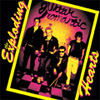 The Exploding Hearts are unabashed disciples of the vibrant,inescapably catchy power pop of bands like The Knack and The Nerves.Mixing the thrust of early punk with the melodic sensibilities ofsixties results in a spirited, irresistible product with a sharp edge.It's evident throughout Guitar Romantic that it isn't a pose, nor is it a joke. These are guys who are on their third or fourth copy of Singles Going Steadycause they wore them out, who wondered what Brian Wilson might havesounded like if he met up with Richard Hell, who know the value of agood, steady finger snap and aren't afraid to use it. This is the musicthey love and it is that passion that makes Guitar Romanticsuch an engaging listen. Don't think that because they pay homage to somany of their influences that there is nothing new on this record. Infact, the Exploding Hearts bring a ferocious energy to their sound,charging headfirst into a crunchy rocker, or soulfully crooning alongwith a backup harmony. "Modern Kicks" opens things up, digging rightin, and guaranteeing that you'll stick around for the rest of album.The lead guitar slices through the fuzzed out production that causesthe instruments to blur and rattle around each other. The mix gives adirty, vintage sound that adds to the personality of the music. Itsounds as if the album had slipped behind a shelf or under a pile ofrecords twenty years ago, only to be rediscovered today as a lost popgem. The bright shuffle of "Sleeping Aids and Razorblades" carries theHearts' soulful romantic persona with clever lyrics like "it's a littleupbeat / and it ain't in tune / you know it's just like this heart ofmine." That line could serve as the tagline for Guitar Romantic,as the Hearts cover the trials and troubles of teenage romance with theresiliently forlorn attitude they deserve, all packaged in a blissfullysweet pop delivery. "Jailbird," a love song about sniffing glue, has adevastatingly hooky chorus, amplified by the call and response backupvocals and a 120 watt guitar melody. You'll find yourself followingalong with every "Yeah, Yeah" and "Woah, Woah." There truly is not aweak song on the entire album. Each track is irresistibly catchy andafter a brief ten songs in twenty-eight minutes, the desire for anotherfix is intense. Guitar Romantic could have easily become justanother nostalgia act looking to knock off the past, but this is farfrom the case. They bring their own tack to a familiar style, imbuingit with a newfound youth and soul. The energy and vitality that theExploding Hearts put out is stunning, their music finely crafted topound even the most jaded music fan into grinning, head bouncingsubmission.
The Exploding Hearts are unabashed disciples of the vibrant,inescapably catchy power pop of bands like The Knack and The Nerves.Mixing the thrust of early punk with the melodic sensibilities ofsixties results in a spirited, irresistible product with a sharp edge.It's evident throughout Guitar Romantic that it isn't a pose, nor is it a joke. These are guys who are on their third or fourth copy of Singles Going Steadycause they wore them out, who wondered what Brian Wilson might havesounded like if he met up with Richard Hell, who know the value of agood, steady finger snap and aren't afraid to use it. This is the musicthey love and it is that passion that makes Guitar Romanticsuch an engaging listen. Don't think that because they pay homage to somany of their influences that there is nothing new on this record. Infact, the Exploding Hearts bring a ferocious energy to their sound,charging headfirst into a crunchy rocker, or soulfully crooning alongwith a backup harmony. "Modern Kicks" opens things up, digging rightin, and guaranteeing that you'll stick around for the rest of album.The lead guitar slices through the fuzzed out production that causesthe instruments to blur and rattle around each other. The mix gives adirty, vintage sound that adds to the personality of the music. Itsounds as if the album had slipped behind a shelf or under a pile ofrecords twenty years ago, only to be rediscovered today as a lost popgem. The bright shuffle of "Sleeping Aids and Razorblades" carries theHearts' soulful romantic persona with clever lyrics like "it's a littleupbeat / and it ain't in tune / you know it's just like this heart ofmine." That line could serve as the tagline for Guitar Romantic,as the Hearts cover the trials and troubles of teenage romance with theresiliently forlorn attitude they deserve, all packaged in a blissfullysweet pop delivery. "Jailbird," a love song about sniffing glue, has adevastatingly hooky chorus, amplified by the call and response backupvocals and a 120 watt guitar melody. You'll find yourself followingalong with every "Yeah, Yeah" and "Woah, Woah." There truly is not aweak song on the entire album. Each track is irresistibly catchy andafter a brief ten songs in twenty-eight minutes, the desire for anotherfix is intense. Guitar Romantic could have easily become justanother nostalgia act looking to knock off the past, but this is farfrom the case. They bring their own tack to a familiar style, imbuingit with a newfound youth and soul. The energy and vitality that theExploding Hearts put out is stunning, their music finely crafted topound even the most jaded music fan into grinning, head bouncingsubmission.  The Exploding Hearts are unabashed disciples of the vibrant,inescapably catchy power pop of bands like The Knack and The Nerves.Mixing the thrust of early punk with the melodic sensibilities ofsixties results in a spirited, irresistible product with a sharp edge.It's evident throughout Guitar Romantic that it isn't a pose, nor is it a joke. These are guys who are on their third or fourth copy of Singles Going Steadycause they wore them out, who wondered what Brian Wilson might havesounded like if he met up with Richard Hell, who know the value of agood, steady finger snap and aren't afraid to use it. This is the musicthey love and it is that passion that makes Guitar Romanticsuch an engaging listen. Don't think that because they pay homage to somany of their influences that there is nothing new on this record. Infact, the Exploding Hearts bring a ferocious energy to their sound,charging headfirst into a crunchy rocker, or soulfully crooning alongwith a backup harmony. "Modern Kicks" opens things up, digging rightin, and guaranteeing that you'll stick around for the rest of album.The lead guitar slices through the fuzzed out production that causesthe instruments to blur and rattle around each other. The mix gives adirty, vintage sound that adds to the personality of the music. Itsounds as if the album had slipped behind a shelf or under a pile ofrecords twenty years ago, only to be rediscovered today as a lost popgem. The bright shuffle of "Sleeping Aids and Razorblades" carries theHearts' soulful romantic persona with clever lyrics like "it's a littleupbeat / and it ain't in tune / you know it's just like this heart ofmine." That line could serve as the tagline for Guitar Romantic,as the Hearts cover the trials and troubles of teenage romance with theresiliently forlorn attitude they deserve, all packaged in a blissfullysweet pop delivery. "Jailbird," a love song about sniffing glue, has adevastatingly hooky chorus, amplified by the call and response backupvocals and a 120 watt guitar melody. You'll find yourself followingalong with every "Yeah, Yeah" and "Woah, Woah." There truly is not aweak song on the entire album. Each track is irresistibly catchy andafter a brief ten songs in twenty-eight minutes, the desire for anotherfix is intense. Guitar Romantic could have easily become justanother nostalgia act looking to knock off the past, but this is farfrom the case. They bring their own tack to a familiar style, imbuingit with a newfound youth and soul. The energy and vitality that theExploding Hearts put out is stunning, their music finely crafted topound even the most jaded music fan into grinning, head bouncingsubmission.
The Exploding Hearts are unabashed disciples of the vibrant,inescapably catchy power pop of bands like The Knack and The Nerves.Mixing the thrust of early punk with the melodic sensibilities ofsixties results in a spirited, irresistible product with a sharp edge.It's evident throughout Guitar Romantic that it isn't a pose, nor is it a joke. These are guys who are on their third or fourth copy of Singles Going Steadycause they wore them out, who wondered what Brian Wilson might havesounded like if he met up with Richard Hell, who know the value of agood, steady finger snap and aren't afraid to use it. This is the musicthey love and it is that passion that makes Guitar Romanticsuch an engaging listen. Don't think that because they pay homage to somany of their influences that there is nothing new on this record. Infact, the Exploding Hearts bring a ferocious energy to their sound,charging headfirst into a crunchy rocker, or soulfully crooning alongwith a backup harmony. "Modern Kicks" opens things up, digging rightin, and guaranteeing that you'll stick around for the rest of album.The lead guitar slices through the fuzzed out production that causesthe instruments to blur and rattle around each other. The mix gives adirty, vintage sound that adds to the personality of the music. Itsounds as if the album had slipped behind a shelf or under a pile ofrecords twenty years ago, only to be rediscovered today as a lost popgem. The bright shuffle of "Sleeping Aids and Razorblades" carries theHearts' soulful romantic persona with clever lyrics like "it's a littleupbeat / and it ain't in tune / you know it's just like this heart ofmine." That line could serve as the tagline for Guitar Romantic,as the Hearts cover the trials and troubles of teenage romance with theresiliently forlorn attitude they deserve, all packaged in a blissfullysweet pop delivery. "Jailbird," a love song about sniffing glue, has adevastatingly hooky chorus, amplified by the call and response backupvocals and a 120 watt guitar melody. You'll find yourself followingalong with every "Yeah, Yeah" and "Woah, Woah." There truly is not aweak song on the entire album. Each track is irresistibly catchy andafter a brief ten songs in twenty-eight minutes, the desire for anotherfix is intense. Guitar Romantic could have easily become justanother nostalgia act looking to knock off the past, but this is farfrom the case. They bring their own tack to a familiar style, imbuingit with a newfound youth and soul. The energy and vitality that theExploding Hearts put out is stunning, their music finely crafted topound even the most jaded music fan into grinning, head bouncingsubmission. 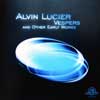 These five Lucier pieces dating from 1961 to 1970 provide handyillustrations of my love-hate relationship with American academicmusic. Its central Theory versus Music dialectic is interesting. Is thetheory on which music is based important? If so, to whom? If a CD makesno sense aesthetically or otherwise until the liner notes are read (andthe liner notes are in this elevated domain unquestionably important)what does that say about the music? Does the pleasure of listeningdepend on the theory or should the pleasure be sought in the theoryitself? The first illustration on this CD is "Vespers" (1969) whichinvolves performers moving around a given acoustic space withdirectional pulse generators. I liked the piece before I read the notesbut I find it makes even more interesting listening how that I have.The piece demonstrates the theory that humans perceive physical spacethrough our sense of hearing. Without the theory, it's fifteen minutesof attractive clicking sounds but with the theory the listener becomesconsciously involved by providing and operating the apparatus for theperceptual half of the experiment, which can lead to deeperunderstanding and pleasure—it's rather like having impressionistpainting explained to you for the first time. Implication: theory canenhance music. "Chambers" (1968) illustrates another point; beforereading my response was: sounds okay, nice enough. It involves variousrecordings of sound spaces, such as a railway station, cafeteria orwhat-have-you, playing on portable devices, disguised in some kind ofwrapping, that are placed within the performance sound space—thuschambers (i.e. acoustic spaces) within chambers. Now that's fine andperhaps even witty, in a rather twee academic way, but grasping theconcept doesn't improve the listening experience and I'm beginning toget annoyed by the suggestion that the concept is even relevant to me.Implication: theory doesn't always enhance music and can detract. Onyet another hand, "North American Time Capsule" (1967), a performanceon the archaic Sylvania encrypting voice encoder without thecorresponding decoder, is unlistenable with or without the various deepand interesting levels of meaning provided by its associated theory.Implication: theory cannot enhance bad music. "(Middletown) MemorySpace" (1970) is scripted thus: a number of singers and/orinstrumentalists go out into a city and "record, by anymeans—electronic recording, graphic notation, or memory—the sounds ofthe city," return and "re-create, solely my means of your voices andinstruments and with the aid of memory devices (without additions,deletions, improvisation, interpretation) those outside soundsituations." On this performance the music sounds like rather dullimprov. Contemplating the composition (i.e. the instructions) providesa better distraction than the music: can it be done?; does it matter atall if it can't?; is the absurd impossibility of the parenthetical"without" clause another joke?; is this what group improv sounds likewhen exerting personality and thus interaction is explicitlyforbidden?; what must it be like to be paid to think about thesethings? And there we have, I fear, the crucible of my irritation:jealousy. These Cagian exercises must surely be great fun for thecomposer and may even be pleasing for the performers but the disregardfor whether or not the music will be any good to listen to is a littleirksome to the mere audience member. The implication is that composingand being a composer is more important than being a listener, eventhough the former is existentially dependent on the latter (composingfor its own sake has little to do with music). Such elitism isjustifiable and I am thankful for it when the resulting art is good andvaluable. But when it is not, which is not the exceptional case inAmerican academic music, I find that I cannot discard it without envy.
These five Lucier pieces dating from 1961 to 1970 provide handyillustrations of my love-hate relationship with American academicmusic. Its central Theory versus Music dialectic is interesting. Is thetheory on which music is based important? If so, to whom? If a CD makesno sense aesthetically or otherwise until the liner notes are read (andthe liner notes are in this elevated domain unquestionably important)what does that say about the music? Does the pleasure of listeningdepend on the theory or should the pleasure be sought in the theoryitself? The first illustration on this CD is "Vespers" (1969) whichinvolves performers moving around a given acoustic space withdirectional pulse generators. I liked the piece before I read the notesbut I find it makes even more interesting listening how that I have.The piece demonstrates the theory that humans perceive physical spacethrough our sense of hearing. Without the theory, it's fifteen minutesof attractive clicking sounds but with the theory the listener becomesconsciously involved by providing and operating the apparatus for theperceptual half of the experiment, which can lead to deeperunderstanding and pleasure—it's rather like having impressionistpainting explained to you for the first time. Implication: theory canenhance music. "Chambers" (1968) illustrates another point; beforereading my response was: sounds okay, nice enough. It involves variousrecordings of sound spaces, such as a railway station, cafeteria orwhat-have-you, playing on portable devices, disguised in some kind ofwrapping, that are placed within the performance sound space—thuschambers (i.e. acoustic spaces) within chambers. Now that's fine andperhaps even witty, in a rather twee academic way, but grasping theconcept doesn't improve the listening experience and I'm beginning toget annoyed by the suggestion that the concept is even relevant to me.Implication: theory doesn't always enhance music and can detract. Onyet another hand, "North American Time Capsule" (1967), a performanceon the archaic Sylvania encrypting voice encoder without thecorresponding decoder, is unlistenable with or without the various deepand interesting levels of meaning provided by its associated theory.Implication: theory cannot enhance bad music. "(Middletown) MemorySpace" (1970) is scripted thus: a number of singers and/orinstrumentalists go out into a city and "record, by anymeans—electronic recording, graphic notation, or memory—the sounds ofthe city," return and "re-create, solely my means of your voices andinstruments and with the aid of memory devices (without additions,deletions, improvisation, interpretation) those outside soundsituations." On this performance the music sounds like rather dullimprov. Contemplating the composition (i.e. the instructions) providesa better distraction than the music: can it be done?; does it matter atall if it can't?; is the absurd impossibility of the parenthetical"without" clause another joke?; is this what group improv sounds likewhen exerting personality and thus interaction is explicitlyforbidden?; what must it be like to be paid to think about thesethings? And there we have, I fear, the crucible of my irritation:jealousy. These Cagian exercises must surely be great fun for thecomposer and may even be pleasing for the performers but the disregardfor whether or not the music will be any good to listen to is a littleirksome to the mere audience member. The implication is that composingand being a composer is more important than being a listener, eventhough the former is existentially dependent on the latter (composingfor its own sake has little to do with music). Such elitism isjustifiable and I am thankful for it when the resulting art is good andvaluable. But when it is not, which is not the exceptional case inAmerican academic music, I find that I cannot discard it without envy. 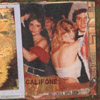 This is proof that a band can combine a number of different musicalgenres into an album and still have it be as beautiful as it isinteresting. Country and folk roots, good ol' fashioned rock, blues,and sound collages all fit together quite nicely and summon spiritsboth old and new with outstanding results. Califone's Quicksand/Cradlesnakesdoesn't have a single wasted note on it. Electric and acousticinstrumentation fit together like pieces of a musical puzzle few othershave been able to solve; tape loops of broken, stringed instruments,computer beeps and bloops, and spiraling machine noise slideeffortlessly into and alongside country-tinged ballads full oflamenting pianos and dancing guitars. A perfect example of this lovelycombination is "Horoscopic.Amputation.Honey.," where buzzing guitarsshift in and out of mix that includes wooden, rattling percussion, whatsounds like a type-writer, and twangy acoustic guitar. Tim Rutili'svoice plays a big part in the music, too. At times his voice is sweetand soft like a lullaby and elsewhere it is bold and full of attitude.The rebellious and edgey "Your Golden Ass" is full spicey vocals,surreal lyrics, grimy guitar, and steel drums that somehow fit in witheverything else. The primitive and nervous "(Red)" makes me feel likeI'm in the middle of an almost-deserted and very dangerous townsomewhere in a vast desert and "When Leon Spinx Moved Into Town" is asexy, albeit quiet, rock tune blossoming with southern spices and atension that is hard to identify, but is looming and menacing in a verysinister way. The entire album is lavished with images and emotionsthat leave no room for dull moments. Califone has given birth to onehell of a fine rock album; it is diverse, full of lovely songs, andjust plain fun to listen to.
This is proof that a band can combine a number of different musicalgenres into an album and still have it be as beautiful as it isinteresting. Country and folk roots, good ol' fashioned rock, blues,and sound collages all fit together quite nicely and summon spiritsboth old and new with outstanding results. Califone's Quicksand/Cradlesnakesdoesn't have a single wasted note on it. Electric and acousticinstrumentation fit together like pieces of a musical puzzle few othershave been able to solve; tape loops of broken, stringed instruments,computer beeps and bloops, and spiraling machine noise slideeffortlessly into and alongside country-tinged ballads full oflamenting pianos and dancing guitars. A perfect example of this lovelycombination is "Horoscopic.Amputation.Honey.," where buzzing guitarsshift in and out of mix that includes wooden, rattling percussion, whatsounds like a type-writer, and twangy acoustic guitar. Tim Rutili'svoice plays a big part in the music, too. At times his voice is sweetand soft like a lullaby and elsewhere it is bold and full of attitude.The rebellious and edgey "Your Golden Ass" is full spicey vocals,surreal lyrics, grimy guitar, and steel drums that somehow fit in witheverything else. The primitive and nervous "(Red)" makes me feel likeI'm in the middle of an almost-deserted and very dangerous townsomewhere in a vast desert and "When Leon Spinx Moved Into Town" is asexy, albeit quiet, rock tune blossoming with southern spices and atension that is hard to identify, but is looming and menacing in a verysinister way. The entire album is lavished with images and emotionsthat leave no room for dull moments. Califone has given birth to onehell of a fine rock album; it is diverse, full of lovely songs, andjust plain fun to listen to.  Occasionally there is a song which comes along that is so damnedexciting time just plain stops for three minutes and 14 seconds. Theexperience of hearing Sharon Jones' cover of Janet Jackson's "What HaveYou Done for Me Lately" on the local college radio waves has beenabsolutely maddening. Perhaps the novelty of a soul revival outfitdoing a 1980s cover tune in 1960s funk style was enough to get thissong noticed, but once it's heard, it's damned addictive. No matter ifI was stuck in traffic behind dildos on mobile phones or getting up andready for work, the world truly did feel like a great place to be whenthis song came on. Hearing the album in full now is nothing less than adivine reward. It's safe to say that the energy captured by Jones andthe Dap Kings througout the entire record is equally as feverish andunstoppable as the single, and after countless listens it's not losingone bit of the charm. Dap-Dippin'is the first full-length for NYC-based Daptone Records (founded in thewake of the demise of Desco records) and collects a number of the songsfrom various 7" singles released by Jones over the last couple years.Recently, the singles and albums seem to be popping up in bizarreplaces and catching on to those both curious and adventurous enough togive it a try, and rightfully so. The music is a fantastic tribute tothe untainted sound of years long gone, presented in living mono andskillfully produced with an ensemble of talented musicians to give it alive in-studio production feeling that bands HAD to get right backbefore multitracking was affordable. Jones, a former session vocalistand the singer occasionally known as Miss Lafaye, fronts the groupthrough ten songs of unchained vigor with the saucy attitude of themost famous funk frontmen and the seasoned grace of a lady who knowsher shit. The real leader however seems to be Bosco Mann, bassist forthe Sugarman 3 and probably a member of a number of Daptone (andformerly Desco) in-house bands. Dap-Dippin' tactfully has theelements which usually contractually made up a late 1960s vocal soulrecord, with the live clip for the introduction, the high energy hitsingles (like "Got a Thing on My Mind" and "Got to be the Way it Is,")the ballad ("Make it Good to Me") and the tunes with the instrumentalbreakdowns for the band to show off and the listeners to get down("Pick it Up, Lay it in the Cut"). I hate to admit that it may besomewhat formulaic but I will stand by my claim that it is undeniablyfun.
Occasionally there is a song which comes along that is so damnedexciting time just plain stops for three minutes and 14 seconds. Theexperience of hearing Sharon Jones' cover of Janet Jackson's "What HaveYou Done for Me Lately" on the local college radio waves has beenabsolutely maddening. Perhaps the novelty of a soul revival outfitdoing a 1980s cover tune in 1960s funk style was enough to get thissong noticed, but once it's heard, it's damned addictive. No matter ifI was stuck in traffic behind dildos on mobile phones or getting up andready for work, the world truly did feel like a great place to be whenthis song came on. Hearing the album in full now is nothing less than adivine reward. It's safe to say that the energy captured by Jones andthe Dap Kings througout the entire record is equally as feverish andunstoppable as the single, and after countless listens it's not losingone bit of the charm. Dap-Dippin'is the first full-length for NYC-based Daptone Records (founded in thewake of the demise of Desco records) and collects a number of the songsfrom various 7" singles released by Jones over the last couple years.Recently, the singles and albums seem to be popping up in bizarreplaces and catching on to those both curious and adventurous enough togive it a try, and rightfully so. The music is a fantastic tribute tothe untainted sound of years long gone, presented in living mono andskillfully produced with an ensemble of talented musicians to give it alive in-studio production feeling that bands HAD to get right backbefore multitracking was affordable. Jones, a former session vocalistand the singer occasionally known as Miss Lafaye, fronts the groupthrough ten songs of unchained vigor with the saucy attitude of themost famous funk frontmen and the seasoned grace of a lady who knowsher shit. The real leader however seems to be Bosco Mann, bassist forthe Sugarman 3 and probably a member of a number of Daptone (andformerly Desco) in-house bands. Dap-Dippin' tactfully has theelements which usually contractually made up a late 1960s vocal soulrecord, with the live clip for the introduction, the high energy hitsingles (like "Got a Thing on My Mind" and "Got to be the Way it Is,")the ballad ("Make it Good to Me") and the tunes with the instrumentalbreakdowns for the band to show off and the listeners to get down("Pick it Up, Lay it in the Cut"). I hate to admit that it may besomewhat formulaic but I will stand by my claim that it is undeniablyfun.  Armed with insomnia, a handful of members from the Godspeed family, and some egregiously long song titles, Set Fire To Flames oscillate only between dark minimalist music to moderately fleshed out instrumentals. Though Set Fire To Flames does not stimulate the same fiercely glorified feeling as Godspeed, they are able to elicit a more subtle response in some of their songs which has the potential to be no less rewarding. Most of the time, though, this sensation is a little more evasive, and the rewards a little more oblique.
Armed with insomnia, a handful of members from the Godspeed family, and some egregiously long song titles, Set Fire To Flames oscillate only between dark minimalist music to moderately fleshed out instrumentals. Though Set Fire To Flames does not stimulate the same fiercely glorified feeling as Godspeed, they are able to elicit a more subtle response in some of their songs which has the potential to be no less rewarding. Most of the time, though, this sensation is a little more evasive, and the rewards a little more oblique.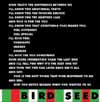 For over 20 years, William Bennett's infamous Whitehouse have remained on top of the power electronics game. While countless acts worldwide (particularly in Sweden and the U.S.) cannot seem to make the musical step past "Thank Your Lucky Stars," Whitehouse has evolved into a far more sinister entity with superior production quality.
For over 20 years, William Bennett's infamous Whitehouse have remained on top of the power electronics game. While countless acts worldwide (particularly in Sweden and the U.S.) cannot seem to make the musical step past "Thank Your Lucky Stars," Whitehouse has evolved into a far more sinister entity with superior production quality. It is so frustrating to hear this release when I know that Sam Shalabi can make excellent music. Osama is lacking almost everything that typically makes Shalabi's music so good. It's not that the musicians here aren't talented and it's not that the music isn't well played, the problem is the lack of depth and complete disparity between the songs.
It is so frustrating to hear this release when I know that Sam Shalabi can make excellent music. Osama is lacking almost everything that typically makes Shalabi's music so good. It's not that the musicians here aren't talented and it's not that the music isn't well played, the problem is the lack of depth and complete disparity between the songs. Giant Sand frontman Howe Gelb credits this solo project to Howe Home, a somewhat ironic reference to the fact that The Listenerwas largely recorded on a trip to Denmark, an ocean and a continentaway from the southwestern sounds that have defined his work. Despitethe change in cultural climate, and the use of Danish supportingmusicians, Gelb sticks to his formula with middling results. Theinitial attitude of The Listener comes across not so much asrelaxed, but lazy. Like a Thorazine stuffed Leonard Cohen, Gelb spillshis vocals over the music in a lackadaisical, arrhythmic manner. Hefloats above the songs, coming down occasionally to momentarily latchonto the beat before releasing it again. "Jason's List" ventures intoclassic AM Radio territory with a modest horn section that sounds rightout of a Burt Bacharach arrangement. On the first several tracks,smooth jazz bass lines and blue-eyed boss nova rhythms threaten toconjure images of hotel lounge singers and elevator accompaniment. Gelbis strongest when his southwestern roots and inspirations form the meatof his songs. "Torque (Tango de la Tongue)" is a sinuous duet withsinger Henriette Sennenvaldt that evolves around a fantastic Latinrhythm. The vocal interplay between the two is wonderful; their hushed,suggestive tones twist around each other as they dance cheek to cheek.Sennenvaldt's Danish accented English adds a disorienting andunexpectedly exotic touch the track. Her presence is welcome, and seemsto focus Gelb's sleepy delivery. The Latin shuffle continues on theinstrumental "Plango," and while it is nearly as entertaining as theprevious track, it really does not add anything to the formula. "LyingThere" is a cute song that shows a pinch of vitality after the album'shalf awake opening. "You can bungle up your own birthday party / byshowing up one year late / you can foul up playing in traffic / just bytrying to concentrate." It's a sunny track that wins you over with abright acoustic melody. "B 4 U (Do Do Do)" invigorates the album with acountry-fried, searing electric guitar while copping the vocal melodyto "Lean on Me." Everything works on this track, with Gelb soundingbuoyant and the accompaniment as bouncy as hell, like a bar band ontheir third round of drinks. "Blood Orange" sees Gelb once againtrading vocals with a woman, this time Marie Frank. Together they tella sweet, endearing love story that's pleasant enough. The second halfof 'The Listener' vastly outshines the first, landing on the oppositeside of the fine line between easygoing and meandering. In a solidfinale, Gelb closes with "Now I Lay Me Down" and "Lemmy N Emmy," twosongs that sound completely formed and confident. Tasteful strings adda stately poignancy to Gelb's worn guitar lines and dusty voice.
Giant Sand frontman Howe Gelb credits this solo project to Howe Home, a somewhat ironic reference to the fact that The Listenerwas largely recorded on a trip to Denmark, an ocean and a continentaway from the southwestern sounds that have defined his work. Despitethe change in cultural climate, and the use of Danish supportingmusicians, Gelb sticks to his formula with middling results. Theinitial attitude of The Listener comes across not so much asrelaxed, but lazy. Like a Thorazine stuffed Leonard Cohen, Gelb spillshis vocals over the music in a lackadaisical, arrhythmic manner. Hefloats above the songs, coming down occasionally to momentarily latchonto the beat before releasing it again. "Jason's List" ventures intoclassic AM Radio territory with a modest horn section that sounds rightout of a Burt Bacharach arrangement. On the first several tracks,smooth jazz bass lines and blue-eyed boss nova rhythms threaten toconjure images of hotel lounge singers and elevator accompaniment. Gelbis strongest when his southwestern roots and inspirations form the meatof his songs. "Torque (Tango de la Tongue)" is a sinuous duet withsinger Henriette Sennenvaldt that evolves around a fantastic Latinrhythm. The vocal interplay between the two is wonderful; their hushed,suggestive tones twist around each other as they dance cheek to cheek.Sennenvaldt's Danish accented English adds a disorienting andunexpectedly exotic touch the track. Her presence is welcome, and seemsto focus Gelb's sleepy delivery. The Latin shuffle continues on theinstrumental "Plango," and while it is nearly as entertaining as theprevious track, it really does not add anything to the formula. "LyingThere" is a cute song that shows a pinch of vitality after the album'shalf awake opening. "You can bungle up your own birthday party / byshowing up one year late / you can foul up playing in traffic / just bytrying to concentrate." It's a sunny track that wins you over with abright acoustic melody. "B 4 U (Do Do Do)" invigorates the album with acountry-fried, searing electric guitar while copping the vocal melodyto "Lean on Me." Everything works on this track, with Gelb soundingbuoyant and the accompaniment as bouncy as hell, like a bar band ontheir third round of drinks. "Blood Orange" sees Gelb once againtrading vocals with a woman, this time Marie Frank. Together they tella sweet, endearing love story that's pleasant enough. The second halfof 'The Listener' vastly outshines the first, landing on the oppositeside of the fine line between easygoing and meandering. In a solidfinale, Gelb closes with "Now I Lay Me Down" and "Lemmy N Emmy," twosongs that sound completely formed and confident. Tasteful strings adda stately poignancy to Gelb's worn guitar lines and dusty voice.  It's so sad that some emo music has gotten the bad rep that it has, asthe style's beginnings had a lot of promise in bands like Sunny DayReal Estate and Mineral. It was energetic, loud guitar music with"emotive" vocal performance and songs that dealt with humanrelationships mostly. Emo has had its off-spring, from the emo-pop ofJimmy Eat World to the emo-sap (or, for me, emo-suck) of DashboardConfessional, and their sound is now more recognized and prevalent thanthe original. They are also the source of the bad reaction to emo.Every once in a while, though, a band or two come along that are loyalto the original sound without sounding trite, and the Impossibles weresuch a band. Showing off all the components of the original sound, butlacking a bit of focus, they released two full-lengths and 2 EPs beforecalling it quits. Now, two members of that band return as Slow Reader,a great name for a band if I've ever heard one. The sound isdrastically different from their former band, as now they record lushpop laments with electronic flourishes. The core feeling is there,though, and the vocal performance is still emotive while maintaining aninteresting detachment and laziness. "I Like You Most" may sound like ahorrible Chris Carraba song title, but it instead takes more from BenFolds and the Beach Boys with overmixed drums and clear harmony vocals."Stupid Bet" features the best lyrics on the whole release, with softlydelivered vocals and remorse over self-created loss and suffering."Anesthetic for the Amputee" is probably the most raw song on thealbum, with just acoustic guitar and a multitude of voices filling thethe speaker. It's a good start, with its weaknesses intact, but itshows promise. For a traditionally punk or ska label to be releasing itis really a good sign of where both artist and label are heading.
It's so sad that some emo music has gotten the bad rep that it has, asthe style's beginnings had a lot of promise in bands like Sunny DayReal Estate and Mineral. It was energetic, loud guitar music with"emotive" vocal performance and songs that dealt with humanrelationships mostly. Emo has had its off-spring, from the emo-pop ofJimmy Eat World to the emo-sap (or, for me, emo-suck) of DashboardConfessional, and their sound is now more recognized and prevalent thanthe original. They are also the source of the bad reaction to emo.Every once in a while, though, a band or two come along that are loyalto the original sound without sounding trite, and the Impossibles weresuch a band. Showing off all the components of the original sound, butlacking a bit of focus, they released two full-lengths and 2 EPs beforecalling it quits. Now, two members of that band return as Slow Reader,a great name for a band if I've ever heard one. The sound isdrastically different from their former band, as now they record lushpop laments with electronic flourishes. The core feeling is there,though, and the vocal performance is still emotive while maintaining aninteresting detachment and laziness. "I Like You Most" may sound like ahorrible Chris Carraba song title, but it instead takes more from BenFolds and the Beach Boys with overmixed drums and clear harmony vocals."Stupid Bet" features the best lyrics on the whole release, with softlydelivered vocals and remorse over self-created loss and suffering."Anesthetic for the Amputee" is probably the most raw song on thealbum, with just acoustic guitar and a multitude of voices filling thethe speaker. It's a good start, with its weaknesses intact, but itshows promise. For a traditionally punk or ska label to be releasing itis really a good sign of where both artist and label are heading.  The upright bass gives a resounding and metronomic thump thump thump onthe new Molasses album. This low-octave punctuation generates a gloomyyet suspended feeling: you might grow anxious in the gray fog thatsurrounds these songs, but you simply cannot escape it or shed thegloom. It lumbers methodically after you while your feet are rooted inplace and you have nowhere to go. But the more you are compelled tolisten in place, the more you notice the glistening sounds of the musicwhich come breaking through the gloom. Scott Chernoff's voice isfamiliar and inviting; it has this habit of laying a heavy croon oraccent on the end of verses and lines, while laying off almostdisinterestedly at the beginning of them. It's not unlike rocking upand down on the waves in a unstable rowing boat which could capsizewith the next swell. Again, the feeling is one of inescapableisolation, but this time some Dramamine might help.
The upright bass gives a resounding and metronomic thump thump thump onthe new Molasses album. This low-octave punctuation generates a gloomyyet suspended feeling: you might grow anxious in the gray fog thatsurrounds these songs, but you simply cannot escape it or shed thegloom. It lumbers methodically after you while your feet are rooted inplace and you have nowhere to go. But the more you are compelled tolisten in place, the more you notice the glistening sounds of the musicwhich come breaking through the gloom. Scott Chernoff's voice isfamiliar and inviting; it has this habit of laying a heavy croon oraccent on the end of verses and lines, while laying off almostdisinterestedly at the beginning of them. It's not unlike rocking upand down on the waves in a unstable rowing boat which could capsizewith the next swell. Again, the feeling is one of inescapableisolation, but this time some Dramamine might help.Surrounding Chernoff is the requisite (and, at this point, almostcliched) Montreal cooperative of musicians whose memberships in otherbands would be too laborious to enumerate (a sampling of theConstellation and Alien8 labels will give you a representativecross-section). Let it just be known that there is a lush assortment ofpiano, guitars, strings, horns, and organs. "Death March (Erskine'stheme)" lets loose at one point with what rightfully could be called anaural assault of horns, percussion, guitars and banjos. For about twominutes, it sounds as if thirteen New Orleans brass bands weresimultaneously competing on separate street corners of Bourbon Street.My biggest disappointment with Molasses is how similar all the songsare. I enjoy the sound of the first few songs, like "Valley Song" and"Insomnia," and the music along with the lyrics along with thepackaging (we will talk about this shortly) create this lovely gothicenvironment (not gothic in the way you are thinking. I am merelytalking about 18th century spooky houses in rural New England, lit bymoonlight and with wind rustling dead leaves on trees). But soon therepetition of chords, tempos, and vocals give the sensation of beingstuck in a time loop. Listen to one of the song samples and you have afairly good idea how the entire album sounds. The instrumental songscome almost as a relief, for they are the most distinct andexperimental pieces in the two disc set and they remind us we stillgoing forward in time rather than repeating it. Despite the homogenoussound, it is not too much of a chore to listen through two discs sinceMolasses executes a pleasant sound. The packaging of 'A Slow Messe' isbeautifully done without being cumbersome and unwieldy. The dualbooklets feature lyrics as well as Chernoff's photographs, distressedto make them look ancient or unearthed. By the end of listening to thealbum and perusing the inserts, I understood how aptly named the bandis. Chernoff's vocals stretch out with the viscosity of drops ofmolasses, keeping level and understated during the formation of thedrop and rising at the point at which the droplet of molasses gets tooheavy for itself and finally falls away into the dark space below.
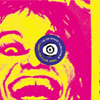 Whilst the leading cut promoting the very disappointing Plastic Fangisn't much to get excited over unless you're big into the V/Vm Shakin'Green Door massive, the bulldozing Techno Animal remix of "Over andOver" shows just how a slice of mediocrity can be elevated togreatness. I only picked this single up for that remix, which is ashardass siren spurting as the best of their audio assaults and mightjust be the best thing Spencer has done, or had done to him, sincePussy Galore! Barry Adamson's remix of the same track is alsoeffective, if comparatively slinky and sleazy. It doesn't set theemergency flashlights off at quite the same frequency but it gets thefeet moving frantically with its fucked over drum'n'bass distortionmoves, as does the Tremelo Beer Gut mix of "She Said." Who is TremeloBeergut anyway? Only the sugary sheen of the Sub Species "MoneyRock'N'Roll" remix fails to get my blood pumpin'. This is a bland lotof ol' toss that sounds like some kind of misguided bid for Ibitha.Otherwise, this is a creditable salvage operation that pulls surprisingfiery modern machine shapes from an album that seemed like an exercisein terminally bland self parody. If you've ever enjoyed anything fromTechno Animal, Barry Adamson or Jon Spencer then this single shouldn'tbe ignored. So far I just can't be bothered to watch the four videos ofthe Explosion in action tagged on the end, but I guess they probablyoffer value for rock'n'roll money if you have a computer that can dealwith that much shakin' excitement, Steven.
Whilst the leading cut promoting the very disappointing Plastic Fangisn't much to get excited over unless you're big into the V/Vm Shakin'Green Door massive, the bulldozing Techno Animal remix of "Over andOver" shows just how a slice of mediocrity can be elevated togreatness. I only picked this single up for that remix, which is ashardass siren spurting as the best of their audio assaults and mightjust be the best thing Spencer has done, or had done to him, sincePussy Galore! Barry Adamson's remix of the same track is alsoeffective, if comparatively slinky and sleazy. It doesn't set theemergency flashlights off at quite the same frequency but it gets thefeet moving frantically with its fucked over drum'n'bass distortionmoves, as does the Tremelo Beer Gut mix of "She Said." Who is TremeloBeergut anyway? Only the sugary sheen of the Sub Species "MoneyRock'N'Roll" remix fails to get my blood pumpin'. This is a bland lotof ol' toss that sounds like some kind of misguided bid for Ibitha.Otherwise, this is a creditable salvage operation that pulls surprisingfiery modern machine shapes from an album that seemed like an exercisein terminally bland self parody. If you've ever enjoyed anything fromTechno Animal, Barry Adamson or Jon Spencer then this single shouldn'tbe ignored. So far I just can't be bothered to watch the four videos ofthe Explosion in action tagged on the end, but I guess they probablyoffer value for rock'n'roll money if you have a computer that can dealwith that much shakin' excitement, Steven.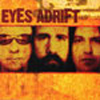 I used to be a big Meat Puppets fan and when I finally got the chanceto see them play live and interview them it was a blast. Curt Kirkwoodwas as hilarious, hallucinatory and obtuse an interviewee as his lyricsmight have suggested he could be and they effortlessly blew thecomparatively lame Soul Asylum right out the door. Nirvana should needeven less introduction. So here are Kirkwood and former Nirvana bassistin a new trio with a drummer from some band called Sublime who I'venever heard of and probably never will bother to. As you might expect,Eyes Adrift are much more like Meat Puppets than Nirvana, after all,Kirkwood was that band's main songwriter. He still splashes togetherdashes of punk rock, country and weird psychedelic acidfire guitarsolos in a way that shouldn't disappoint any old Meat Puppets fans. Infact, the new band seems to have revitalised him and set him lookingfor slightly new angles to throw his illusive songlight on. The albumstarts unobtrusively and builds inexorably. What would be the firstside seems to coast by nicely, but it seems they saved the best songsfor the second half. "Solid" is classic Kirkwood, a huge psyched outlament by a protagonist whose blood has frozen in his veins, perhaps aperverse metaphorical reflection on Meat Puppets and his bassistbrother's drug problems? "Telescope" should have lovers of cute melodictwists and hard chuggin' metal riffage alike grinning from ear to ear,as Kirkwood shows anyone who'll listen how he'll aim his potato gun atthe sun. By the time they run themselves a "Slow Race," where theobject is to lose, there are no fish left in the streams, they've alltaken to the air. Despite some subtle textures imparted by computerediting and recording, there aren't really any huge leaps from MeatPuppets music, but some small progression has been made out of thecreative cul de sac that band seemed to end up in latterly. My biggestsurprise was finding a copy of this CD for the price of half a pint ofbooze in a bargain bin, but the last track is also quite a curveball."Pasted" is an epic meandering voyage that stretches out well overfifteen minutes and glues a vaguely folk rock lyric about old St Paul,which might be sung by Novoselic, onto some of Kirkwood's most ecstaticsundrenched guitar noise ever. You can hear the entire album at the Eyes Adrift site where they also have two new songs up for grabs. The obvious is dead.
I used to be a big Meat Puppets fan and when I finally got the chanceto see them play live and interview them it was a blast. Curt Kirkwoodwas as hilarious, hallucinatory and obtuse an interviewee as his lyricsmight have suggested he could be and they effortlessly blew thecomparatively lame Soul Asylum right out the door. Nirvana should needeven less introduction. So here are Kirkwood and former Nirvana bassistin a new trio with a drummer from some band called Sublime who I'venever heard of and probably never will bother to. As you might expect,Eyes Adrift are much more like Meat Puppets than Nirvana, after all,Kirkwood was that band's main songwriter. He still splashes togetherdashes of punk rock, country and weird psychedelic acidfire guitarsolos in a way that shouldn't disappoint any old Meat Puppets fans. Infact, the new band seems to have revitalised him and set him lookingfor slightly new angles to throw his illusive songlight on. The albumstarts unobtrusively and builds inexorably. What would be the firstside seems to coast by nicely, but it seems they saved the best songsfor the second half. "Solid" is classic Kirkwood, a huge psyched outlament by a protagonist whose blood has frozen in his veins, perhaps aperverse metaphorical reflection on Meat Puppets and his bassistbrother's drug problems? "Telescope" should have lovers of cute melodictwists and hard chuggin' metal riffage alike grinning from ear to ear,as Kirkwood shows anyone who'll listen how he'll aim his potato gun atthe sun. By the time they run themselves a "Slow Race," where theobject is to lose, there are no fish left in the streams, they've alltaken to the air. Despite some subtle textures imparted by computerediting and recording, there aren't really any huge leaps from MeatPuppets music, but some small progression has been made out of thecreative cul de sac that band seemed to end up in latterly. My biggestsurprise was finding a copy of this CD for the price of half a pint ofbooze in a bargain bin, but the last track is also quite a curveball."Pasted" is an epic meandering voyage that stretches out well overfifteen minutes and glues a vaguely folk rock lyric about old St Paul,which might be sung by Novoselic, onto some of Kirkwood's most ecstaticsundrenched guitar noise ever. You can hear the entire album at the Eyes Adrift site where they also have two new songs up for grabs. The obvious is dead. Belgian Arne Van Petegem is also making an attempt to graduate from theclass of instrumental group of European laptop nerds with his latestEP, a prelude to his forthcoming second full-length album. In the threeyears since his last LP, Arne has been recruited by a number ofmusicians and labels to do remixes, singles and compilation tracks.It's probably through this that he reached two conclusions: #1) it'snot so bad to start including organic sounds like guitar back into themix and #2) my voice isn't so bad that I can't start singing the songsI write! Arne even harmonizes with himself on the title track of thisEP, a blissfull introduction to the more evolved Styrofoam sound. Thepretty melodies and robotic percussion have not been forfeited and thevocals and guitars just add a much nicer dimension on this, a moreradio-frendly version of a track of the forthcoming album. "Fade OutYour Eyes" is a live recording of what sounds pretty much likeStyrofoam remixing himself: letting his vocals and instruments twitterand waiver in a beat-less tapestry of digitally echoing samples whichcould easily go on forever. The disc is rounded out by two charmingtechnologically-enhanced cover tunes: "Hard to Find," originally byCodeine and "Snow Crush Killing Song," originally by Mountain Goats.The full-length I'm What's There to Show That Something's Missingis due out this week, but those lucky enough to catch the Notwist ontour right now can catch both a set by Styrofoam and his place in theNotwist, filling in for Martin Gretschmann, who's off doing stuff withConsole right now. While I still might have reservations when it comesto laptop performers, Styrofoam deserves credit for having a rock clubaudience attentive and interested, something most laptoppers can stillonly fanticize about.
Belgian Arne Van Petegem is also making an attempt to graduate from theclass of instrumental group of European laptop nerds with his latestEP, a prelude to his forthcoming second full-length album. In the threeyears since his last LP, Arne has been recruited by a number ofmusicians and labels to do remixes, singles and compilation tracks.It's probably through this that he reached two conclusions: #1) it'snot so bad to start including organic sounds like guitar back into themix and #2) my voice isn't so bad that I can't start singing the songsI write! Arne even harmonizes with himself on the title track of thisEP, a blissfull introduction to the more evolved Styrofoam sound. Thepretty melodies and robotic percussion have not been forfeited and thevocals and guitars just add a much nicer dimension on this, a moreradio-frendly version of a track of the forthcoming album. "Fade OutYour Eyes" is a live recording of what sounds pretty much likeStyrofoam remixing himself: letting his vocals and instruments twitterand waiver in a beat-less tapestry of digitally echoing samples whichcould easily go on forever. The disc is rounded out by two charmingtechnologically-enhanced cover tunes: "Hard to Find," originally byCodeine and "Snow Crush Killing Song," originally by Mountain Goats.The full-length I'm What's There to Show That Something's Missingis due out this week, but those lucky enough to catch the Notwist ontour right now can catch both a set by Styrofoam and his place in theNotwist, filling in for Martin Gretschmann, who's off doing stuff withConsole right now. While I still might have reservations when it comesto laptop performers, Styrofoam deserves credit for having a rock clubaudience attentive and interested, something most laptoppers can stillonly fanticize about. What's immediately striking about the third album by Michael Gira's Angels of Light is the visual presentation. The six photos—an empty chair, a cluttered desk, a room full of plants, a bookcase loaded with CDs and books, a rosary draped over a thermostat, and, perhaps most tellingly, an empty bedseem to paint a picture of a sufficient but lonely life.
What's immediately striking about the third album by Michael Gira's Angels of Light is the visual presentation. The six photos—an empty chair, a cluttered desk, a room full of plants, a bookcase loaded with CDs and books, a rosary draped over a thermostat, and, perhaps most tellingly, an empty bedseem to paint a picture of a sufficient but lonely life.
 Seemingly out of nowhere comes this 21-year-old oddball whose fourtrack demo tape piqued the interest of Michael Gira and thus thisrelease on Young God and membership in The Angels of Light. Banhart'sbiography reads like a transient David Lynch. He has lived everywherefrom Texas to Caracas to Paris to a NYC squat, attended art school inSan Francisco and played gay weddings and Ethiopian restaurants.Somehow it all makes sense. Selected for this disc are 22 of the 75 orso songs recorded over the past three to four years. Gira wiselydecided not to polish the diamond in the rough, i.e. he has simplyreleased the original demos rather than quarantine Banhart in a studiofor new versions. This is bare Banhart: double tracked voice andacoustic guitar with whistles and hand claps, plus tape hiss andwhatever else happened to be going on in the background for extracharacter. Most of the time the finger picking is plaintive and thevocals are hushed (recalling Nick Drake some), at others it's much morefrantic with wild strumming (recalling Syd Barret some) and thefalsetto morphing into the call of some yet to be discovered rainforest bird. The lyrics are suitably simple and/or surreal withdeceivingly naive plays on words and word associations that reveal asharp mind. Prime examples are in "Roots (If The Sky Were a Stone)":"when the roots of the tree / are as cold as can be / when the wind andthe sea / are the moth and the bee / when the rays of the sun / lickyour skin with its tongue / and the grass with its green / and theshine with its sheen / and the trains with their tracks / and thespines with their backs / and your sway with its slow / and the windwith its blow" and in "Michigan State": "well my snail has my favoriteslow / the shell helps the snail still the skin lays low / and if mysnail has my favorite slow / then my cold has my favorite snow / but ifmy snail is cold and comes to a halt / then my sea has my favorite salt/ the salt keeps the sea from feeling sweet / and my toes have myfavorite feet / and if I sweat salt and the Earth sweats heat". Inaddition, there's "Lend Me Your Teeth" with it's strange single linemantra: "I'm lost in the dark / lend me your teeth / come on!"Everything is fair game as subject matter for Banhart's songs (10 areless than two minutes long and many come to a sudden, unexpected end)including lovers, teachers, friends and family. I never get theimpression that he's being weird for weird's sake—it's eccentric butgenuine, child-like but brilliant, raw but real. These songs areextraordinarily touching, melodic and infectious.
Seemingly out of nowhere comes this 21-year-old oddball whose fourtrack demo tape piqued the interest of Michael Gira and thus thisrelease on Young God and membership in The Angels of Light. Banhart'sbiography reads like a transient David Lynch. He has lived everywherefrom Texas to Caracas to Paris to a NYC squat, attended art school inSan Francisco and played gay weddings and Ethiopian restaurants.Somehow it all makes sense. Selected for this disc are 22 of the 75 orso songs recorded over the past three to four years. Gira wiselydecided not to polish the diamond in the rough, i.e. he has simplyreleased the original demos rather than quarantine Banhart in a studiofor new versions. This is bare Banhart: double tracked voice andacoustic guitar with whistles and hand claps, plus tape hiss andwhatever else happened to be going on in the background for extracharacter. Most of the time the finger picking is plaintive and thevocals are hushed (recalling Nick Drake some), at others it's much morefrantic with wild strumming (recalling Syd Barret some) and thefalsetto morphing into the call of some yet to be discovered rainforest bird. The lyrics are suitably simple and/or surreal withdeceivingly naive plays on words and word associations that reveal asharp mind. Prime examples are in "Roots (If The Sky Were a Stone)":"when the roots of the tree / are as cold as can be / when the wind andthe sea / are the moth and the bee / when the rays of the sun / lickyour skin with its tongue / and the grass with its green / and theshine with its sheen / and the trains with their tracks / and thespines with their backs / and your sway with its slow / and the windwith its blow" and in "Michigan State": "well my snail has my favoriteslow / the shell helps the snail still the skin lays low / and if mysnail has my favorite slow / then my cold has my favorite snow / but ifmy snail is cold and comes to a halt / then my sea has my favorite salt/ the salt keeps the sea from feeling sweet / and my toes have myfavorite feet / and if I sweat salt and the Earth sweats heat". Inaddition, there's "Lend Me Your Teeth" with it's strange single linemantra: "I'm lost in the dark / lend me your teeth / come on!"Everything is fair game as subject matter for Banhart's songs (10 areless than two minutes long and many come to a sudden, unexpected end)including lovers, teachers, friends and family. I never get theimpression that he's being weird for weird's sake—it's eccentric butgenuine, child-like but brilliant, raw but real. These songs areextraordinarily touching, melodic and infectious.  Coil is easily playing some of their most haunting, spectral, hypnotic, and sublime material ever, combining the new with the old and doing so without the outcome sounding muddled or too disparate.
Coil is easily playing some of their most haunting, spectral, hypnotic, and sublime material ever, combining the new with the old and doing so without the outcome sounding muddled or too disparate.
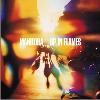 Canadian born London dweller Dan Snaith has reintroduced Manitoba with his second full-length release. Up In Flamesis a fantastic surprise, as it is a complete turn around from themeandering simplicity of the relatively trendy instrumental electronicmusic on earlier releases. With vocals, guitars, bombastic organic andsamples drums, feverishly catchy melodies, and a complete overload ofcollected sounds, instruments and an excess of quirky samples, thiscould easibly be one of the most maximalistic recordings by one personin a long while. With the keen skill of roping everything into ablissful melodic soup, this album is easily poised to be thebreakthrough hit of the spring. From the opener "I've Lived on a DirtRoad All My Life," there is no irony, no pulled punches, as the musicjust barrels in with nearly no introduction. A gorgeous interlude endsthe piece with a moment to let things settle in and stays rather lowkey for the instrumental follower. "Skunks" opens and closes with thesounds of frogs (what identifiable sounds do skunks make after all?)but is propelled along with bass and guitar playing, layers of drums,screechy sax, The energy blasts back in with the one-two punch of thetwo vocal tracks "Hendrix with KO," and the single "Jacknuggeted,"which could easily be two of my fave songs on the disc. Snaith isn'tafraid to stack killer drum samples upon drum samples, hand claps, fillthe rest in with gorgeous harp sweeps and always make it a point to endon a good note. With songs like "Bijoux," this one man army hasachieved what numerous multi-member ensembles have only ever dreamt of.If anything, on the vocal tracks, Snaith probably could try and get alittle more confident with his voice so it's not as buried in the mix.Other than that very, very minor observation, this album is flawless.Manitoba is set to tour North America with Four Tet and Prefuse 73.Promises have been made to turn Manitoba into a fully realized liveband with two drummers, guitars and a whole mess of other people. Let'shope this happens.
Canadian born London dweller Dan Snaith has reintroduced Manitoba with his second full-length release. Up In Flamesis a fantastic surprise, as it is a complete turn around from themeandering simplicity of the relatively trendy instrumental electronicmusic on earlier releases. With vocals, guitars, bombastic organic andsamples drums, feverishly catchy melodies, and a complete overload ofcollected sounds, instruments and an excess of quirky samples, thiscould easibly be one of the most maximalistic recordings by one personin a long while. With the keen skill of roping everything into ablissful melodic soup, this album is easily poised to be thebreakthrough hit of the spring. From the opener "I've Lived on a DirtRoad All My Life," there is no irony, no pulled punches, as the musicjust barrels in with nearly no introduction. A gorgeous interlude endsthe piece with a moment to let things settle in and stays rather lowkey for the instrumental follower. "Skunks" opens and closes with thesounds of frogs (what identifiable sounds do skunks make after all?)but is propelled along with bass and guitar playing, layers of drums,screechy sax, The energy blasts back in with the one-two punch of thetwo vocal tracks "Hendrix with KO," and the single "Jacknuggeted,"which could easily be two of my fave songs on the disc. Snaith isn'tafraid to stack killer drum samples upon drum samples, hand claps, fillthe rest in with gorgeous harp sweeps and always make it a point to endon a good note. With songs like "Bijoux," this one man army hasachieved what numerous multi-member ensembles have only ever dreamt of.If anything, on the vocal tracks, Snaith probably could try and get alittle more confident with his voice so it's not as buried in the mix.Other than that very, very minor observation, this album is flawless.Manitoba is set to tour North America with Four Tet and Prefuse 73.Promises have been made to turn Manitoba into a fully realized liveband with two drummers, guitars and a whole mess of other people. Let'shope this happens. 2002 was a good year for James Murphy. Not only did his label, co-ownedwith Pat Mahoney, release some of the year's best records (Black Dice'sBeaches and Canyons and The Rapture's "House of Jealous Lovers"), buthis own self-proclaimed "electro-disco" one-man group, LCD Soundsystem,put out the underground dance hit of the summer. His second release asLCD Soundsystem simultaneously caps off a spectacular 2002 for Murphywhile hinting at an even better 2003. "Give It Up" begins where the"Losing My Edge" 12" left off, but with some minor adjustments. Goneare the Casio beats and the hipster-scene criticism, and much of theelectro influence. Instead, we're given a fuller, more band orientatedsound (although it's Murphy who plays all the instruments), featuring apropulsive, funked-up bass line and an all-around fiercer rhythmsection. The result is an instantly danceable track, engaging from thevery first notes of the opening drum roll. One would expect more of thesame on the flip side of the 7", but "Tired" delivers a pounding, dirtyrocker that is quite befuddling at first. But after a few listens, it'sclear that Murphy (along with Mahoney on this track) can just as easilywrite songs that sound more appropriate in a dank bar than at a chicdance club. Yet, even though Murphy has proved he can do more than justwrite a good dance tune (although it's still what he does best), Iwould hate to see LCD Soundsystem release a full-length anytime soon.After two singles as good as "Losing My Edge" and "Give It Up," I'd bebegging to hear an LP, but I have a nagging feeling that these tunesare best served up in small doses.
2002 was a good year for James Murphy. Not only did his label, co-ownedwith Pat Mahoney, release some of the year's best records (Black Dice'sBeaches and Canyons and The Rapture's "House of Jealous Lovers"), buthis own self-proclaimed "electro-disco" one-man group, LCD Soundsystem,put out the underground dance hit of the summer. His second release asLCD Soundsystem simultaneously caps off a spectacular 2002 for Murphywhile hinting at an even better 2003. "Give It Up" begins where the"Losing My Edge" 12" left off, but with some minor adjustments. Goneare the Casio beats and the hipster-scene criticism, and much of theelectro influence. Instead, we're given a fuller, more band orientatedsound (although it's Murphy who plays all the instruments), featuring apropulsive, funked-up bass line and an all-around fiercer rhythmsection. The result is an instantly danceable track, engaging from thevery first notes of the opening drum roll. One would expect more of thesame on the flip side of the 7", but "Tired" delivers a pounding, dirtyrocker that is quite befuddling at first. But after a few listens, it'sclear that Murphy (along with Mahoney on this track) can just as easilywrite songs that sound more appropriate in a dank bar than at a chicdance club. Yet, even though Murphy has proved he can do more than justwrite a good dance tune (although it's still what he does best), Iwould hate to see LCD Soundsystem release a full-length anytime soon.After two singles as good as "Losing My Edge" and "Give It Up," I'd bebegging to hear an LP, but I have a nagging feeling that these tunesare best served up in small doses. While I love sociological criticism woven into art, if it is so deliberate that it is an album's strongest point, I'm bound to be disappointed after the first listen. That being said, Lovebomb is an extremely well-founded concept album about love and the expression of culturally specific social processes, an overarching thesis that I won't attempt to evaluate. Thaemlitz covers many angles and perspectives in his exploration of this ubiquitous emotion, using generally interesting, but sometimes run of the mill, electro-acoustic music.
While I love sociological criticism woven into art, if it is so deliberate that it is an album's strongest point, I'm bound to be disappointed after the first listen. That being said, Lovebomb is an extremely well-founded concept album about love and the expression of culturally specific social processes, an overarching thesis that I won't attempt to evaluate. Thaemlitz covers many angles and perspectives in his exploration of this ubiquitous emotion, using generally interesting, but sometimes run of the mill, electro-acoustic music.
 After my first listen to this album at a low volume level, I was alittle worried because there didn't seem to be much going on; butluckily, subsequent listens on a decent system revealed a great levelof detail, much of it buried under immense low end. The focal point isthe periodic repetition of a low-pass-filtered percussive sound,stretched out to such an extent that its booming decay lingers longenough to reveal the slow fluctuations of a vibrating membrane. This isaccompanied by a harmonically rich, but somewhat muted, midrange dronethat very slowly fades from complete silence to full volume and thenback again to nothingness, bringing new layers of sound with eachiteration. The tonal elements resemble Köner's more recent Unerforschtes Gebietrecording in their texture and evocation of abandoned places. Here theyare softer. The percussion and gradual variations in amplitude lend amysterious—and somewhat human—element to an otherwise uninhabitedlandscape. Midway through the piece, the drone descends ratherconspicuously through four closely-spaced notes, in what is reminiscentof a threateningly futuristic movie soundtrack. After this big event,some quiet, almost mechanical, filtered noise emerges, along withrepeated bass-rich volume swells that sound like more stretched outpercussion, this time played backwards. The slight hissing and patientrise and fall in volume are like breathing; and the middle part of thisrecording is really quite beautiful, despite the abundance of low-endmaking it almost claustrophobic and morose. Shades of the descendingmelody are audible as the original sounds return, and the drum soundre-enters and grows more and more extended throughout the remainder ofthe piece. It finally ends with a sustained rumble. Even with thelimited range of sound that Köner seems to have confined himself to, Daikan is quite stunning and is a fine addition to the Köner collection.
After my first listen to this album at a low volume level, I was alittle worried because there didn't seem to be much going on; butluckily, subsequent listens on a decent system revealed a great levelof detail, much of it buried under immense low end. The focal point isthe periodic repetition of a low-pass-filtered percussive sound,stretched out to such an extent that its booming decay lingers longenough to reveal the slow fluctuations of a vibrating membrane. This isaccompanied by a harmonically rich, but somewhat muted, midrange dronethat very slowly fades from complete silence to full volume and thenback again to nothingness, bringing new layers of sound with eachiteration. The tonal elements resemble Köner's more recent Unerforschtes Gebietrecording in their texture and evocation of abandoned places. Here theyare softer. The percussion and gradual variations in amplitude lend amysterious—and somewhat human—element to an otherwise uninhabitedlandscape. Midway through the piece, the drone descends ratherconspicuously through four closely-spaced notes, in what is reminiscentof a threateningly futuristic movie soundtrack. After this big event,some quiet, almost mechanical, filtered noise emerges, along withrepeated bass-rich volume swells that sound like more stretched outpercussion, this time played backwards. The slight hissing and patientrise and fall in volume are like breathing; and the middle part of thisrecording is really quite beautiful, despite the abundance of low-endmaking it almost claustrophobic and morose. Shades of the descendingmelody are audible as the original sounds return, and the drum soundre-enters and grows more and more extended throughout the remainder ofthe piece. It finally ends with a sustained rumble. Even with thelimited range of sound that Köner seems to have confined himself to, Daikan is quite stunning and is a fine addition to the Köner collection. 


